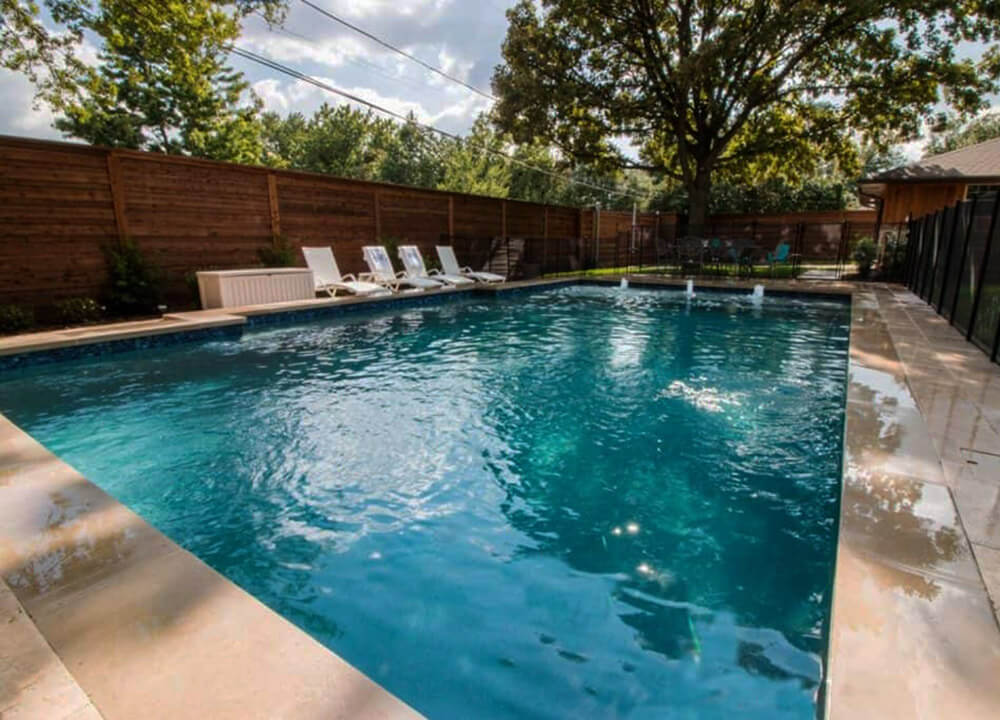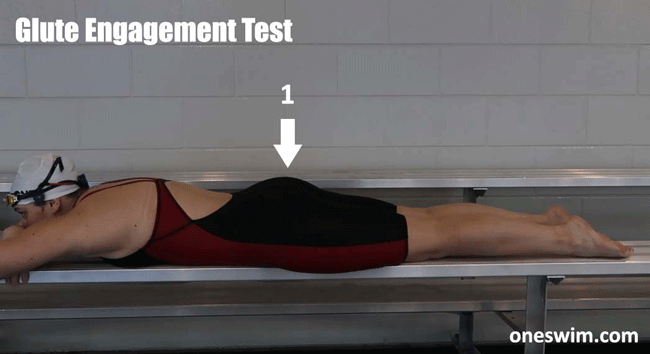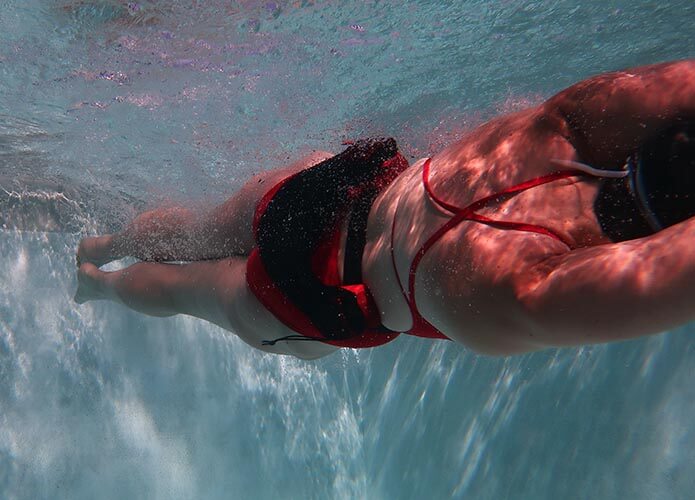How a Backyard Pool Can Save Your Swim Body

Whether your swim group is shut down, you are on vacation, or you are a triathlete looking for a place to train, backyard pools can be far more productive than you may think. At an average of 35 feet or less, most backyard pools provide competitive swimmers very little workout effort, unless you completely rethink and redo the way you train. A flip turn and underwater undulations can take up an entire pool length, leaving no length for a real workout. By converting your at-home dryland training over to ‘swim specific muscle movements’, you can offset the net loss you are having by not swimming. But if you have access to a backyard pool, your body will sustain its swim muscles much better by getting in the pool 5-7x per week. Any swimmer knows that a week of vacation can require 2-3 weeks of swimming to get back to the shape you were originally in before the vacation. This is costly when you combine all the vacations during the year, or months of stay-at-home orders.
In order to maximize the conditioning you can receive with a backyard pool, you will need to embrace interval intensity training and creative techniques. As a home base for such training, you can find short videos, sets, and set components for backyard-pool training here. For most people the idea of swimming in backyard pools means that you will be swimming on a tether or ‘swim-in-place’. Swimming on a tether may be critical, if you have an extremely small pool or if you just want to stay in shape and are not a competitive swimmer or triathlete. But swimming in place is NOT ideal if you are a competitive swimmer and have a pool that is at least 20 feet long. For such swimmers you should be swimming back and forth in your pool, while engaging much more aggressive technique and forms of resistance swimming. This will start by unlearning ‘good walls’ and doing what we call ‘surface open turns’ (video below).
The next factor that you will need to incorporate, to maximize small pools, is resistance. There are ways you can create resistance on your own (such as wall kicking and vertical kicking), but in most cases you will need physical resistance on your body and enlarged paddles, and other devices. An ideal device for backyard pools is the Power Chute by ONEswim.com. This is a parachute that is worn directly on the small of your back. A normal parachute on a tether won’t open up until you are almost more than half way across most backyard pools, making them worthless for this use. The Power Chute can be worn on your back or on your stomach and will open up before your feet even leave the wall. This provides constant resistance to make your pool feel nearly 2x longer. But, this is just 1 of many devised that can help create resistance, and you can find kits of products and more options out there.
Now that you have the right approach and the right gear, you need a plan to create your workouts. Plenty of set components are offered here – Backyard Pool Training Workout Sets ( with lots of worksheets for ‘pull’, ‘kick’, ‘main’ sets and more with each component having a brief video to make sure the swimmer, and their spotter, understand the purpose and performance of each exercise. This allows you to build your own progressive workouts based on your skills and conditioning over time. But before we go any further, a legal disclaimer… do not train yourself with any of these methods without someone to spot you and keep an eye on you. These methods are not recommended for beginner swimmers, or young swimmers, but should only be done under close supervision, just like any other competitive swim practice always has a coach and typically a lifeguard watching you.
Now let’s dig into the type of changes you need to make so your backyard pool workouts will push you technically and physically.
DON’T Do Flip Turns!
Quality flip turns can ruin your conditioning in a backyard pool. This is not because of your turn itself, as much as due to your underwaters. Unless you are purposefully working on your underwaters, or doing things like underwater flutter kicking, pushing off underwater and undulating 3-4 times will get you most or all of the way across your backyard pool. There is no way to fully push your cardio conditioning, or pull muscles, if you don’t surface until you are 5-10 feet from the next wall. The best way to avoid all of this underwater distance is to do a ‘surface open turn’. This is the same as a true open turn (for breast and fly races) but instead of pushing off underwater, you will push off on the surface (like you did when you were just learning to swim and didn’t want to get your face in the water too much). Simply do a normal open turn, but stay on the surface so you are pushing off on the surface. The resistance of the surface when you push off the wall will prevent you from going too far before you need to start swimming, kicking, pulling, etc… This requires a lot of effort and gives you the entire distance of your pool to work on your primary set goal.
Create Resistance!
First, you don’t want to think about using fins in a short pool, unless you are ‘wall kicking,’ as you don’t need to make it easier on yourself. The opposite, resistance, is what you really need to get the most out of your backyard pool. One way to create resistance is to place your hands on the wall and kick for 15-20 seconds ‘all out’. But, the most efficient option is the Power Chute, as we explained above. The parachute you can put on your stomach or your back. This will require more effort for each movement without impacting your technique and quality.
Additionally, ONEswim Power Bags is another ideal way to add drag and build muscles. The Power Bags can be worn as ‘socks’ on the feet, over the calves, over the arms, around the waist, hands, and much more. They allow you to target specific muscle groups such as the kick recovery muscle groups in a fraction of the time as normal swimming.
Light weights can also be added to your ankles, wrists or waist. This doesn’t need to be more than ½ pound per limb to really work your recovery muscles over time. ONEswim offers ¼ lb and ½ lb weights that attach to your feet or your ankles as well as weight belts.
Resistance can also be created by banding your ankles together, which will cause them to drop below your body line, and create quite a bit of resistance. Additionally, a Dual Ankle Buoy will hold your legs up near the surface to help improve your technique but at the same time create substantial drag resistance.
Half Long Cords can be connected in sets of 2, to make a full 25 yard stretch cord. But, the Half Long Cord kit is ideal for the length of most backyard pools. They allow you to swim tethered by placing objects on the floor of the pool to change intensities during a swim session. Different levels of effort will position your eyes directly over one spot in the pool, and other levels of effort will move you to a different position on the tether. With the Half Long Cords, you also swim ‘resisted’ to one end of the pool and ‘assisted’ as you swim back in the other direction. They are ideal to train super fast flip and open turns and plenty of other technique.
Isolate and Target Swim-Specific Muscle Group Chains
With short backyard pools, there will be little value in full stroke swimming. With both the arms and the legs moving, neither will get much of a workout when you only get a few stroke cycles at a time. The concern for competitive swimmers, when they are away from 25 yard pools, is that you lose the swim-specific muscle group ordering of firing. You can target your glutes or your biceps with dryland drills, but swimming is a combination of muscles in a specific order that really isn’t mimicked with much of anything we can do on dry land. Our recovery kick muscles are a great example. Lay flat on your stomach on the floor and lift your legs without bending your knees. Do that several times in a row and hold them up for 5-10 seconds each time. These muscles are essential to a swimmer but are not used much at all in our normal dryside activities. Clearly you can visualize how these muscles are important in the kick movements of all 4 of our strokes, and our underwater undulations. But, full stroke ‘swim’ will not target these muscles that much, as we also bend our knees, which tends to negate the development of these muscles and require us to spend many, many hours of ‘swim’ for small gains in our recovery muscles. To dig deeper into your kick recovery muscles, check out this article. All of these methods will work great in a backyard pool (if we use ‘surface open turns’).

Photo Courtesy: Oneswim.com
You can specifically target recovery muscles with products such as the Kick Trainer by ONEswim. Similarly, the BR Kick Trainer is specific to breast kicking muscles and technique. Both of these stretch cord kits can be used in the water and out of the water for constant training.
Another swim-specific muscle chain is our ‘high elbow’ linkage. Yes, we are targeting some of these muscles individually in our dryland drills such as pullups, push-ups, etc… but not as they relate fully to a high catch swim stroke. ONEswim has a fingertip engagement paddle for their dryland stretchcords, that is the only true dryland way to target this full muscle movement besides large machines ( See more on at-home dryalnd and swim-specific movement). However, in-water strokes ensure you are targeting precisely the muscle chain needed.
Backyard pool sets need to isolate and target the specific swim muscle groups, such as the kick recovery chain, arm catch chain, breast kick recovery and catch, as well as a host of core muscle coupling motions by isolating your kick from your pull as much as possible.
Effort!
Team workouts in a 25 yard, or 50 meter, pool are designed to overcome the regular lapses in effort by the swimmer. This happens because you feel the need to pace with others in your lane, get your target goal time on a set, not have your coach fuss at you, and lots of competitive issues that occur in team sessions. But, swimming by yourself in a short pool means you have to push yourself, and exert maximum effort at all times. Don’t think you can cut your overall number of sessions per week or exertion per practice. You can’t even maintain your normal degree of return unless you at least match the time and effort or your normal effort with smart and precise workouts in a short backyard pool.
So, if you are shut out of your team pool, are on vacation, or are a triathlete trying to get in shape, get smart and use your backyard pool to keep you in shape. Stay in shape with any water you can find!
The above press release was posted by Swimming World in conjunction with Oneswim.com. For press releases and advertising inquiries please contact Advertising@SwimmingWorld.com.




